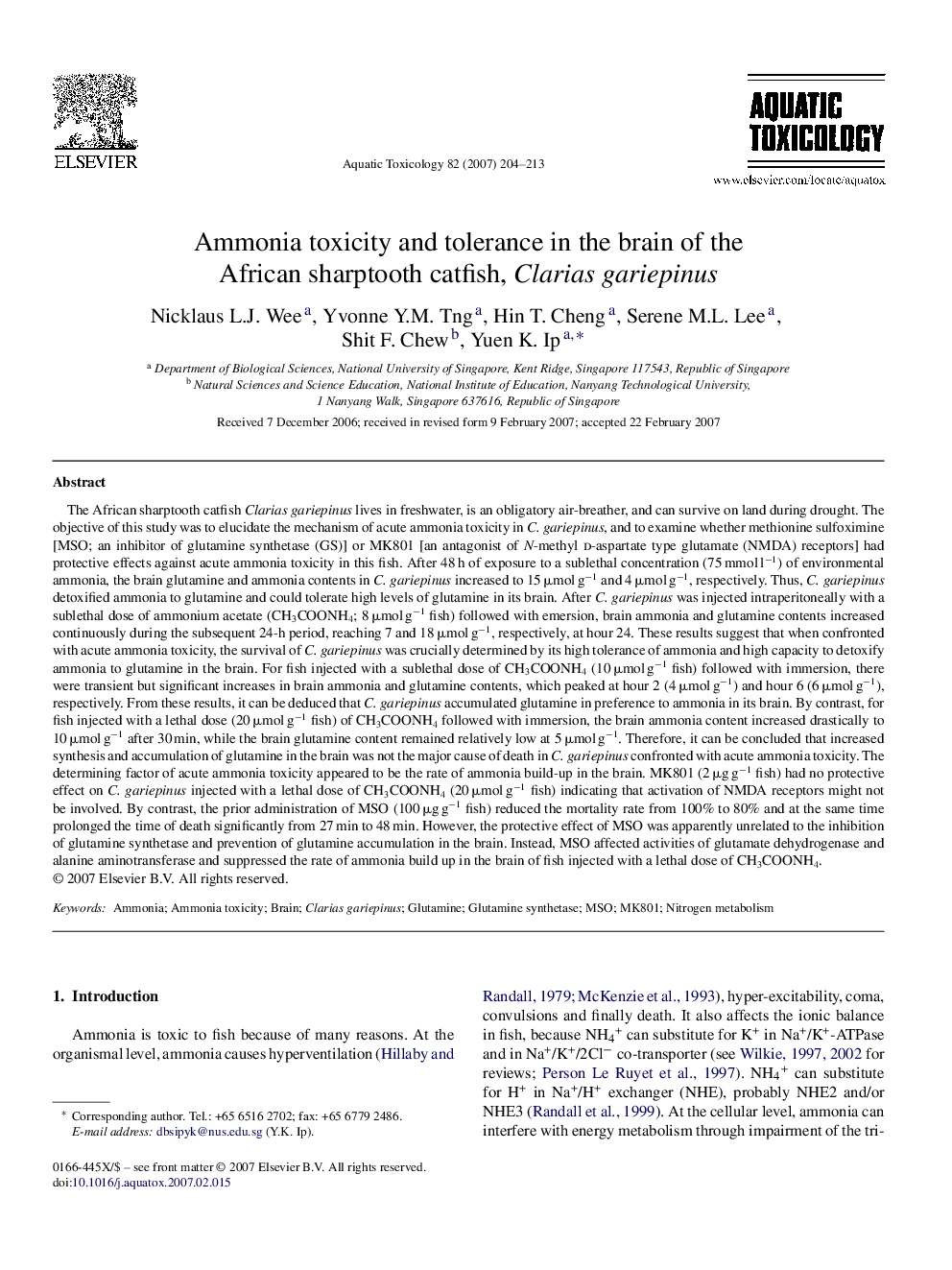| Article ID | Journal | Published Year | Pages | File Type |
|---|---|---|---|---|
| 4531098 | Aquatic Toxicology | 2007 | 10 Pages |
The African sharptooth catfish Clarias gariepinus lives in freshwater, is an obligatory air-breather, and can survive on land during drought. The objective of this study was to elucidate the mechanism of acute ammonia toxicity in C. gariepinus, and to examine whether methionine sulfoximine [MSO; an inhibitor of glutamine synthetase (GS)] or MK801 [an antagonist of N-methyl d-aspartate type glutamate (NMDA) receptors] had protective effects against acute ammonia toxicity in this fish. After 48 h of exposure to a sublethal concentration (75 mmol l−1) of environmental ammonia, the brain glutamine and ammonia contents in C. gariepinus increased to 15 μmol g−1 and 4 μmol g−1, respectively. Thus, C. gariepinus detoxified ammonia to glutamine and could tolerate high levels of glutamine in its brain. After C. gariepinus was injected intraperitoneally with a sublethal dose of ammonium acetate (CH3COONH4; 8 μmol g−1 fish) followed with emersion, brain ammonia and glutamine contents increased continuously during the subsequent 24-h period, reaching 7 and 18 μmol g−1, respectively, at hour 24. These results suggest that when confronted with acute ammonia toxicity, the survival of C. gariepinus was crucially determined by its high tolerance of ammonia and high capacity to detoxify ammonia to glutamine in the brain. For fish injected with a sublethal dose of CH3COONH4 (10 μmol g−1 fish) followed with immersion, there were transient but significant increases in brain ammonia and glutamine contents, which peaked at hour 2 (4 μmol g−1) and hour 6 (6 μmol g−1), respectively. From these results, it can be deduced that C. gariepinus accumulated glutamine in preference to ammonia in its brain. By contrast, for fish injected with a lethal dose (20 μmol g−1 fish) of CH3COONH4 followed with immersion, the brain ammonia content increased drastically to 10 μmol g−1 after 30 min, while the brain glutamine content remained relatively low at 5 μmol g−1. Therefore, it can be concluded that increased synthesis and accumulation of glutamine in the brain was not the major cause of death in C. gariepinus confronted with acute ammonia toxicity. The determining factor of acute ammonia toxicity appeared to be the rate of ammonia build-up in the brain. MK801 (2 μg g−1 fish) had no protective effect on C. gariepinus injected with a lethal dose of CH3COONH4 (20 μmol g−1 fish) indicating that activation of NMDA receptors might not be involved. By contrast, the prior administration of MSO (100 μg g−1 fish) reduced the mortality rate from 100% to 80% and at the same time prolonged the time of death significantly from 27 min to 48 min. However, the protective effect of MSO was apparently unrelated to the inhibition of glutamine synthetase and prevention of glutamine accumulation in the brain. Instead, MSO affected activities of glutamate dehydrogenase and alanine aminotransferase and suppressed the rate of ammonia build up in the brain of fish injected with a lethal dose of CH3COONH4.
